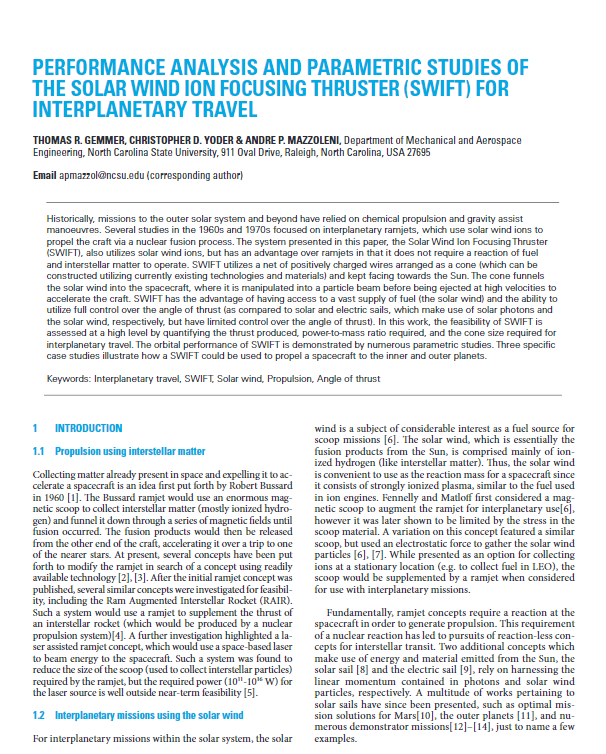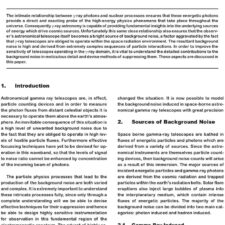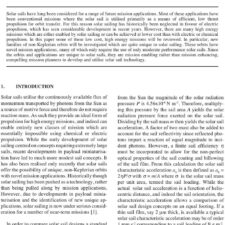Performance Analysis and Parametric Studies of the Solar Wind Ion Focusing Thruster (SWIFT) for Interplanetary Travel
£5.00
T. Gemmer et al. (2021), JBIS, 74, pp.30-40
Refcode: 2021.74.30
Abstract:
Historically, missions to the outer solar system and beyond have relied on chemical propulsion and gravity assist manoeuvres. Several studies in the 1960s and 1970s focused on interplanetary ramjets, which use solar wind ions to propel the craft via a nuclear fusion process. The system presented in this paper, the Solar Wind Ion Focusing Thruster (SWIFT), also utilizes solar wind ions, but has an advantage over ramjets in that it does not require a reaction of fuel and interstellar matter to operate. SWIFT utilizes a net of positively charged wires arranged as a cone (which can be constructed utilizing currently existing technologies and materials) and kept facing towards the Sun. The cone funnels the solar wind into the spacecraft, where it is manipulated into a particle beam before being ejected at high velocities to accelerate the craft. SWIFT has the advantage of having access to a vast supply of fuel (the solar wind) and the ability to utilize full control over the angle of thrust (as compared to solar and electric sails, which make use of solar photons and the solar wind, respectively, but have limited control over the angle of thrust). In this work, the feasibility of SWIFT is assessed at a high level by quantifying the thrust produced, power-to-mass ratio required, and the cone size required for interplanetary travel. The orbital performance of SWIFT is demonstrated by numerous parametric studies. Three specific case studies illustrate how a SWIFT could be used to propel a spacecraft to the inner and outer planets.





